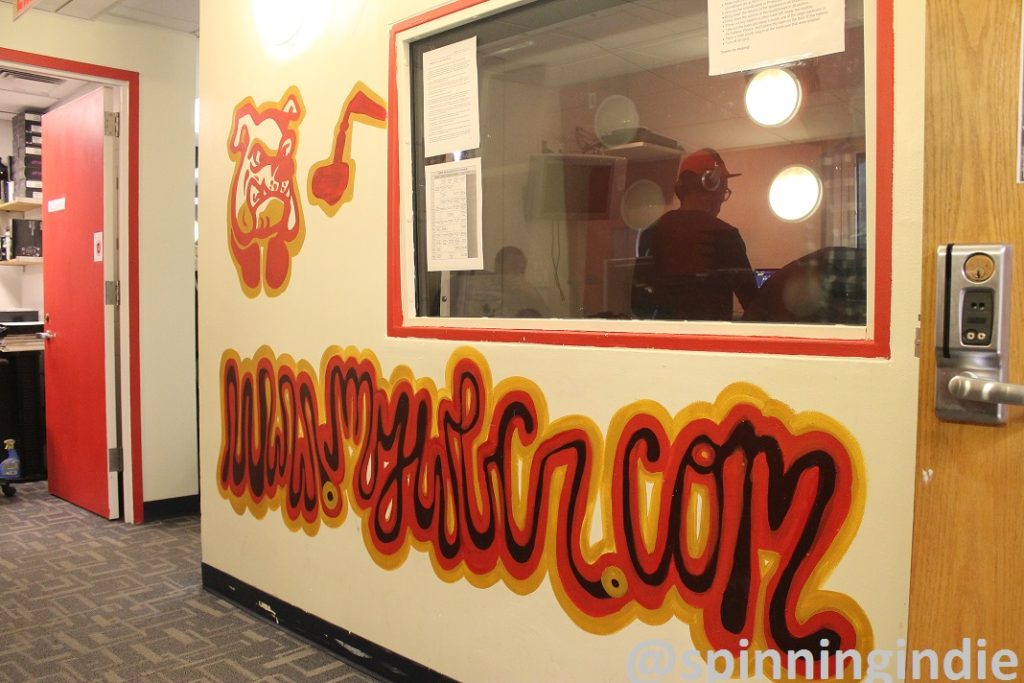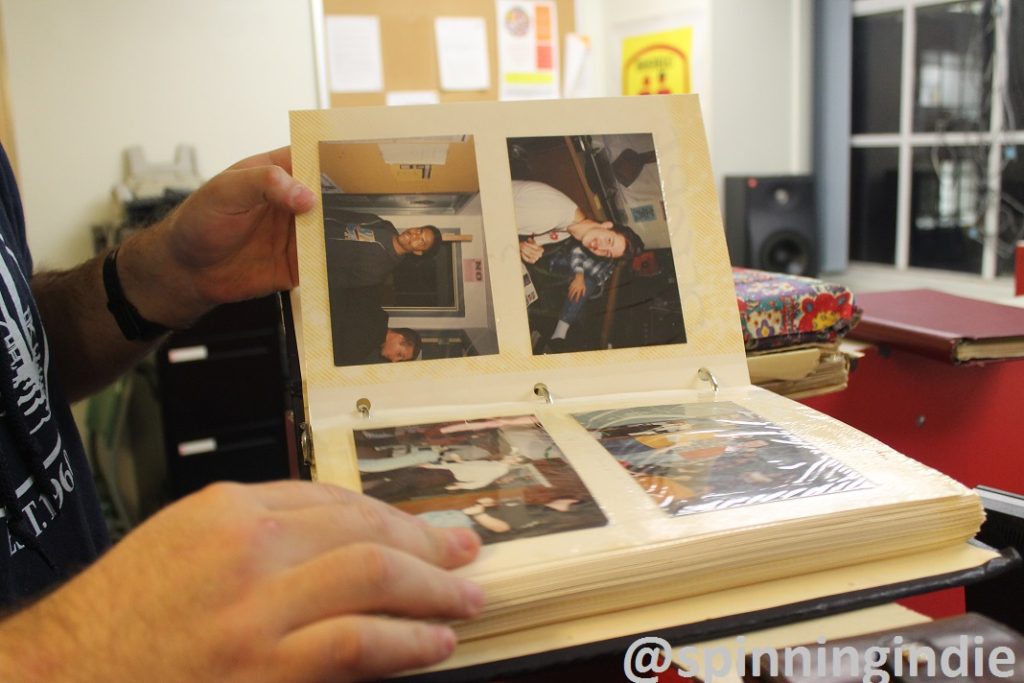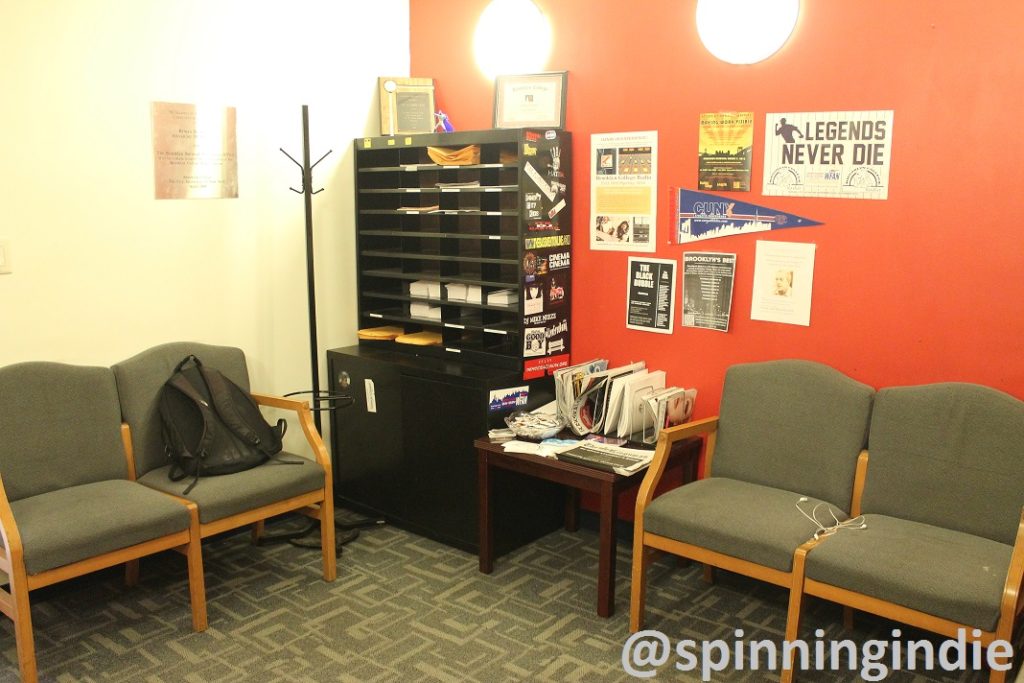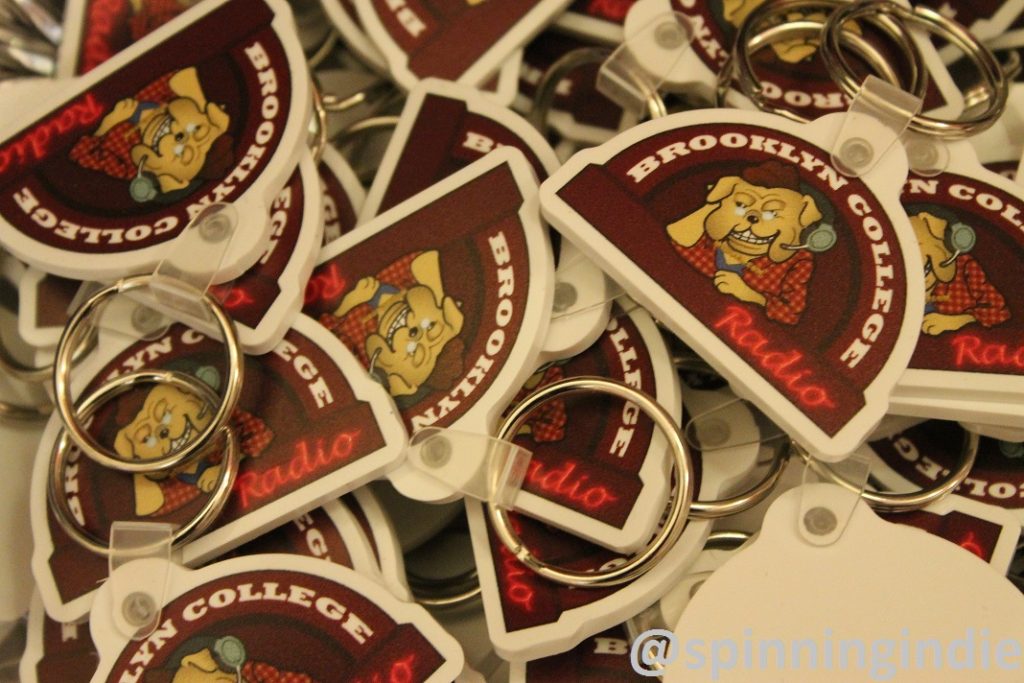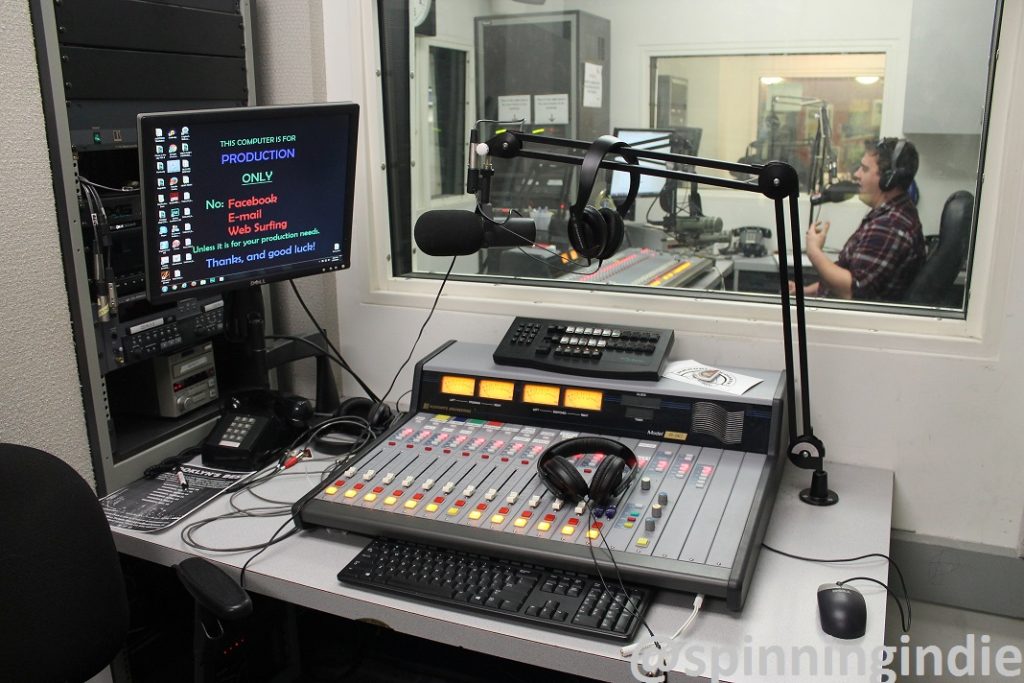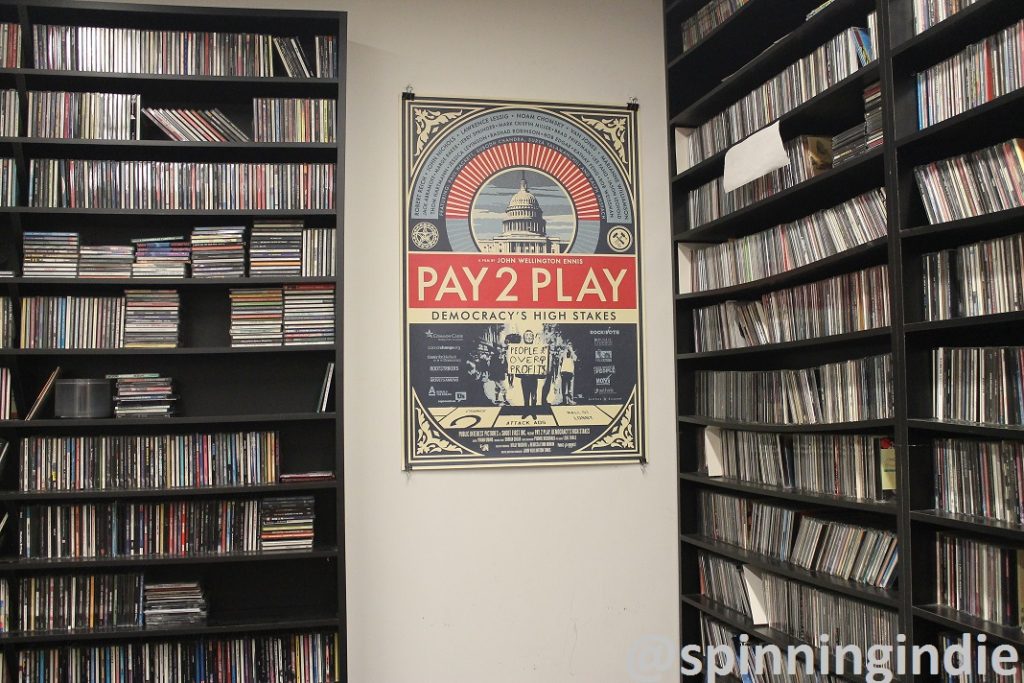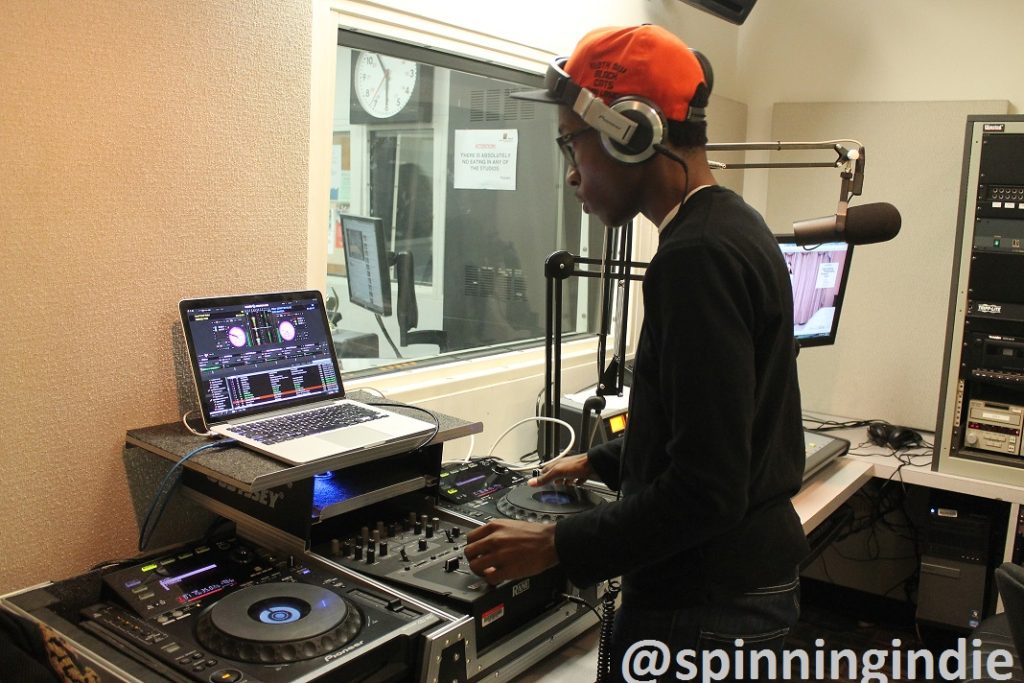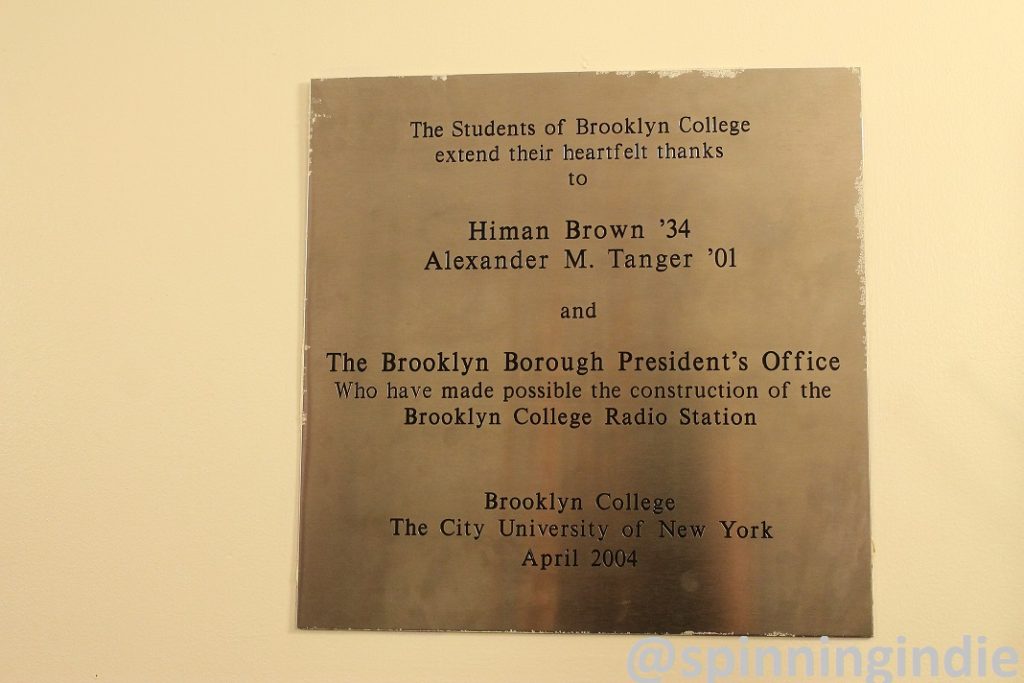In an attempt to see as many radio stations as possible while on the East Coast in February, I created a jam-packed schedule for myself, starting with a visit to Brooklyn College Radio station WBCR on Thursday, February 18. My flight arrived early at JFK, so I was optimistic about making my 5:15pm appointment at WBCR; unfortunately I hadn’t accounted for public transit confusion along the way. After a few missteps, including a cab ride through Brooklyn during rush hour traffic, I arrived quite late at Brooklyn College for my tour.
Luckily, Director of Radio Miguel Macias was able to stick around longer than he had planned (I was afraid that I was going to miss my appointment entirely). Thankfully, I felt like I was already among sympathetic friends, since Faculty Adviser John Anderson (an occasional Radio Survivor contributor and podcast guest) was also on the scene, showing me around the station. Although I had limited time, I was able to take a quick tour and even spotted some historical tidbits in tucked away closets.
Radio has a long history at Brooklyn College, with the first radio classes there starting up through the Department of Speech in 1948 and WBCR purportedly beginning in 1968 as a carrier current station. The station celebrated its 40th anniversary in 2008. Interesting, Brooklyn College was a trial member of the Intercollegiate Broadcasting System starting in 1942, indicating that it was in the planning stages of building a radio station much earlier than a station was presumably built. It’s worth further investigation…
By 1970, the station was already thinking beyond campus-only broadcasting. According to the February 28, 1970 issue of Billboard, WBCR hired a consultant to explore broadcasting options that would expand the station’s coverage and plans were in the works to place carrier current transmitters in off-campus locations, including local businesses and banks. The piece states, “WBCR has been programming Top 40 with an emphasis on underground. There are also classical, jazz, and experimental segments in the format. The format will be changed to emphasize the Top 30 records of the week and choice albums.” Station Founder and President Fred Horowitz told Billboard, “It will be a hip form of Muzak, which all the youth oriented stores will want.”
Today, WBCR is primarily an online station, but it also broadcasts over a low power unlicensed AM signal at 1090 AM. A student club, the station still has a close connection with the Brooklyn College Television and Radio Department. According to a welcome packet given to new WBCR participants,
Brooklyn College Radio’s primary goal is to provide professional training and artistic development for students in the Television and Radio Department at Brooklyn College, and other students interested in the process of running a radio station as well as developing and broadcasting radio shows. To this end it will work with all students to broadcast news, music, public affairs and spoken-‐word programming to the Brooklyn College community.”
Located in Whitehead Hall on the Brooklyn College Campus, WBCR’s current space was rebuilt in 2004 and includes a lobby, office, on-air studio, two production studios, a newsroom, and a couple of storage rooms. When I arrived, a DJ was on the air in the studio and another staffer was working in a production studio.
We took a quick look through all the studios and then glanced in a storage closet (I always love to see what’s buried in closets) and spotted some vintage station photo albums. Behind another locked door was an office that housed the station’s CD library. As we poked through the collection, we noticed quite a few 1990s releases, including some CMJ Certain Damage collections, Rock Against Bush, Volume 1, and the VOLUME EIGHT compilation/zine (with bands like The Fall, James, Come, Elastica, and Butthole Surfers), which Anderson got particularly excited about.
Programs at WBCR include music, talk, sports, and news and are scheduled on weekdays between 10am and 10pm. The station has around 150 participants doing around 50 programs a week. In order to become a full member of the station, all students must first complete a semester-long internship. During the internship, students will receive training and will also intern on either a specific radio show or in a specific department, including sports and news. Following a successful internship, students can apply for a regular shift. I noticed quite a few talk shows on the schedule and Macias acknowledged that while it is not necessarily a specific emphasis or mandate at the station, “most of [the] shows have a strong talk component, and only a few are strictly music.”
Thanks so much to Miguel Macias and John Anderson for the tour of WBCR. This is my 98th station tour report, which means I’m that much closer to my 100th radio station field trip write-up. Is the suspense killing you? While you wait, see my most recent field trips on Radio Survivor and see all of my station tour reports on Spinning Indie. 7/26/16 Update: Hear more about this visit on Episode #46 of the Radio Survivor Podcast.


